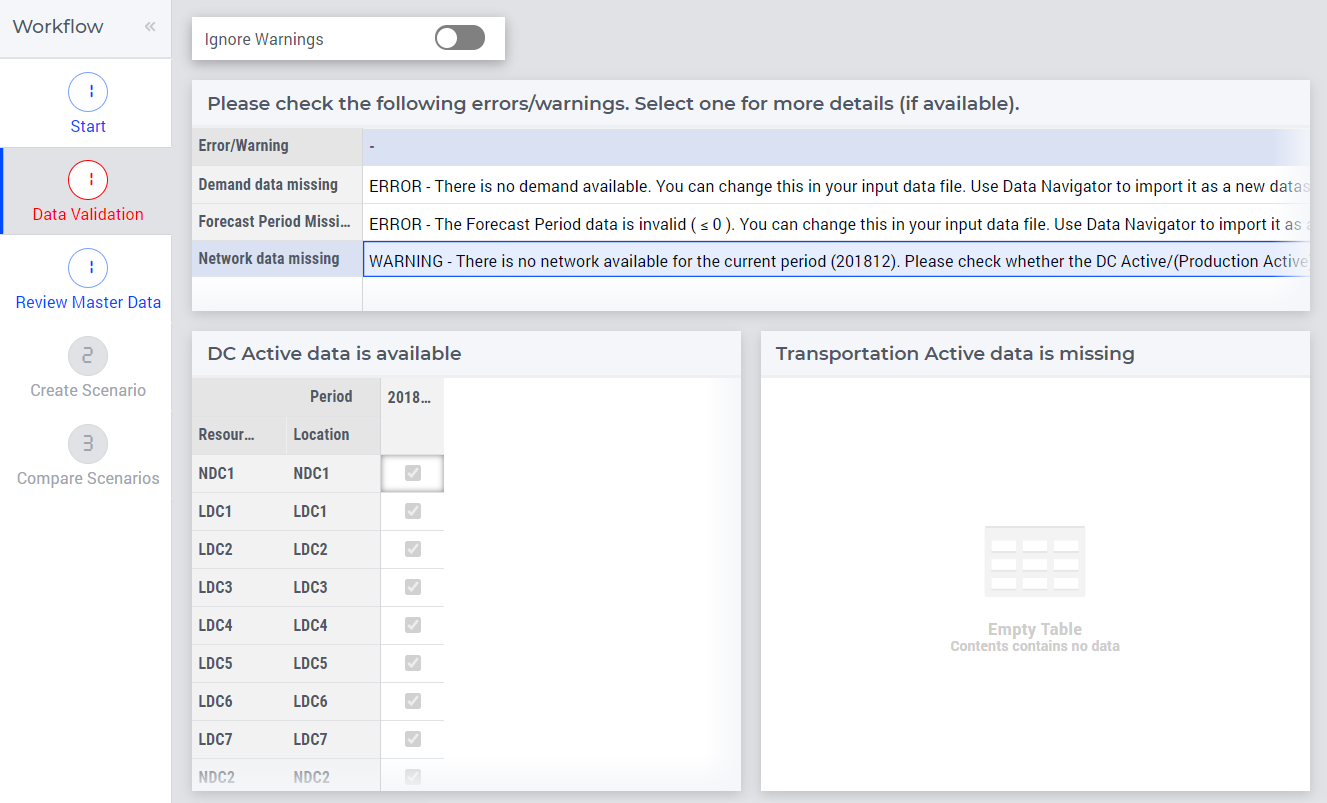Data Validation
After loading a configuration and one or more dataset(s), the Inventory Planning app performs several data validation checks. This is done to check whether the loaded configuration and dataset(s) together contain valid data to perform the inventory calculation on. When everything is valid according to the data validation checks, the first phase (Start) is marked as completed and the user can continue to the next phase (Create Scenario).
However, when the data validation checks run into any data issues, the Data Validation page gets active in the Workflow widget and the user gets a dialog message which tells the user how many errors and/or warnings are found. In case of Errors, the user is automatically directed to the Data Validation page, to allow him/her to see where the problems in the data are. In case of warnings only, the user can decide him/herself to go to the Data Validation page, or to continue with the next phase of the app (Create Scenario). So, errors always need to be fixed. Warnings can be ignored if you’re okay with them.

Ignore Warnings
On top of the page, there is the Ignore Warnings switch that allows the user to ignore warnings more easily. When the switch is turned on for a specific dataset, the next time that that dataset is loaded, the data validation does report the warnings on the data validation page, but in case there are only warnings, it does not provide a dialog message indicating that warnings are there.
Please note that the Ignore Warnings switch value is stored in the dataset of type Inventory Full Data (main dataset type) so loading that same dataset in combination with other datasets (e.g. of type Network Output) will not result in a dialog in case there are only warnings.
Please check the following error(s)/warning(s)…
The second widget on the page shows the error(s) and/or warning(s) that are the result of the data validation checks. Please read them carefully. Based on the type of error(s) and/or warning(s), additional widgets can appear on the page. These widgets show you where exactly in your data lies the problem(s). This can be a combination of multiple attribute values. When you hover over the values, more detailed information is given where available.
In most cases, once you know where the problem(s) is/are in the data, you need to adapt your input data file and load it again in Data Navigator. After saving the adapted dataset, you can go back to Inventory Planning and load it and let the Data Validation perform the checks again. In some cases, using a different/new configuration can also be a solution to fix problems in your data. A new configuration can be created in Data Navigator.
When your Network Output data is not completely valid for using it in Inventory Planning, the app automatically adapts the data and you will get a warning about that. The adapted data is displayed on the Data Validation page, such that you can see what has changed.